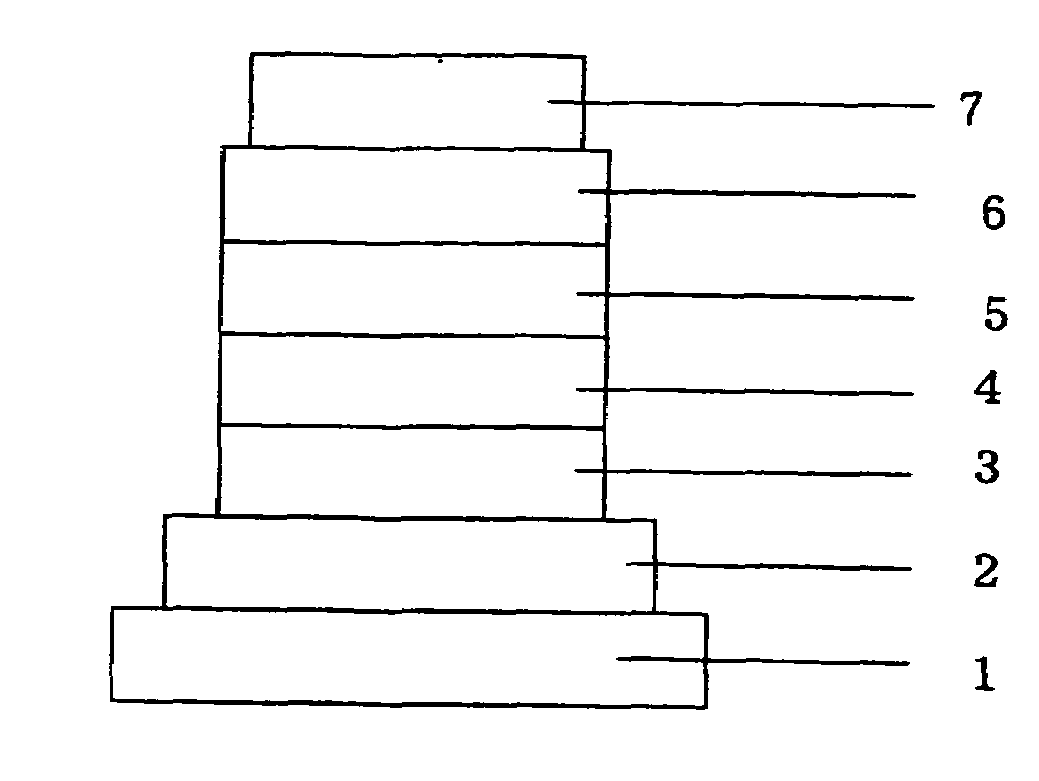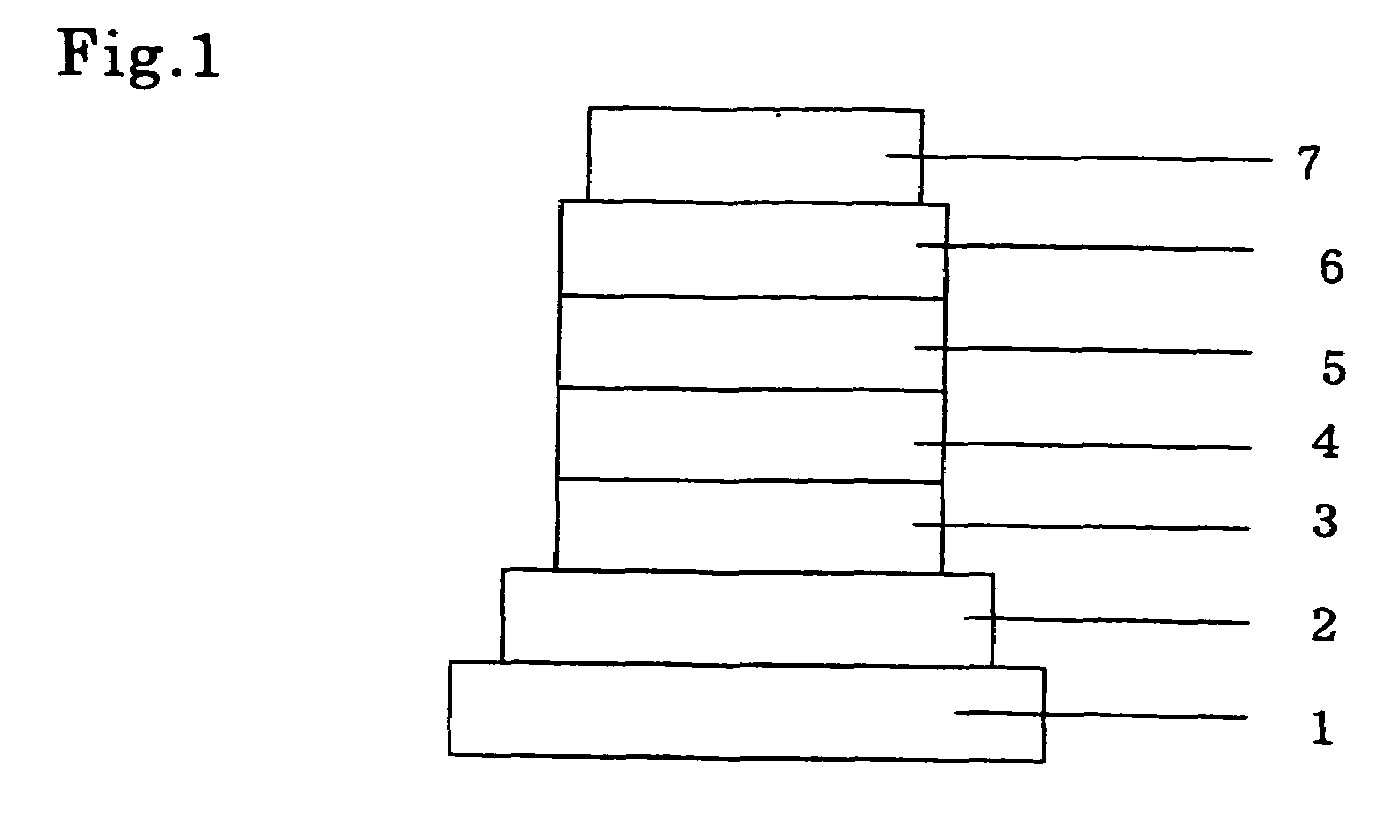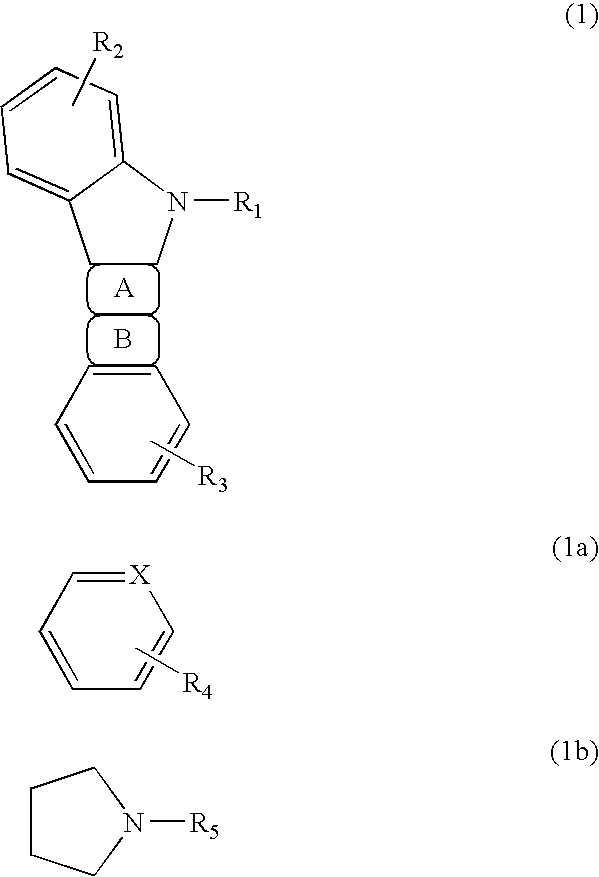Organic Electroluminescent Device
a technology of electroluminescent devices and electroluminescent components, which is applied in the direction of discharge tubes/lamp details, discharge tubes luminescent screens, discharge tubes/lamp details, etc., can solve the problems of low luminous efficiency, low reliability of bcp hole-blocking materials, and extremely short operating life of devices containing bcp, so as to improve the luminous efficiency of the device, secure the driving stability of the device, and high efficiency
- Summary
- Abstract
- Description
- Claims
- Application Information
AI Technical Summary
Benefits of technology
Problems solved by technology
Method used
Image
Examples
example 1
[0039]Compound 1 was deposited on a glass substrate from an evaporation source at a rate of 1.0 Å / sec to a thickness of 50 nm by the vacuum deposition process at a degree of vacuum of 4.0×10−4 Pa. The thin film thus formed was evaluated by a fluorometer.
[0040]Separately, compound 1 and Ir(ppy)3 were codeposited on a glass substrate from different evaporation sources at a rate of 1.0 Å / sec to a thickness of 50 nm by the vacuum deposition process at a degree of vacuum of 4.0×10−4 Pa while controlling the concentration of Ir(ppy)3 at 7.0%.
[0041]The thin film thus formed was evaluated by a fluorometer. The maximum absorption wavelength of compound 1 was used as the excitation wavelength and the light then emitted was observed and compared with the light emitted from the film of compound 1 alone. The results are shown in Table 1.
example 2
[0042]A thin film was formed as in Example 1 with the exception of using compound 5 in place of compound 1. The results are shown in Table 1.
example 3
[0045]An organic EL device was constructed as in FIG. 1 with omission of a hole-injecting layer and addition of an electron-injecting layer. Constituent layers were piled one upon another in thin film on a glass substrate on which a 150 nm-thick ITO anode had been formed by the vacuum deposition process at a degree of vacuum of 4.0×10−4 Pa. First, NPB was deposited on the ITO anode to a thickness of 60 nm to form a hole-transporting layer.
[0046]Next, compound 1 and Ir(ppy)3 were codeposited from different evaporation sources on the hole-transporting layer to a thickness of 25 nm to form a light-emitting layer. The concentration of Ir(ppy)3 at this time was 7.0%. Then, Alq3 was deposited to a thickness of 50 nm to form an electron-transporting layer. Further, lithium fluoride (LiF) was deposited to a thickness of 0.5 nm to form an electron-injecting layer. Finally, aluminum (Al) as an electrode was deposited on the electron-injecting layer to a thickness of 170 nm to complete an orga...
PUM
 Login to View More
Login to View More Abstract
Description
Claims
Application Information
 Login to View More
Login to View More - R&D
- Intellectual Property
- Life Sciences
- Materials
- Tech Scout
- Unparalleled Data Quality
- Higher Quality Content
- 60% Fewer Hallucinations
Browse by: Latest US Patents, China's latest patents, Technical Efficacy Thesaurus, Application Domain, Technology Topic, Popular Technical Reports.
© 2025 PatSnap. All rights reserved.Legal|Privacy policy|Modern Slavery Act Transparency Statement|Sitemap|About US| Contact US: help@patsnap.com



